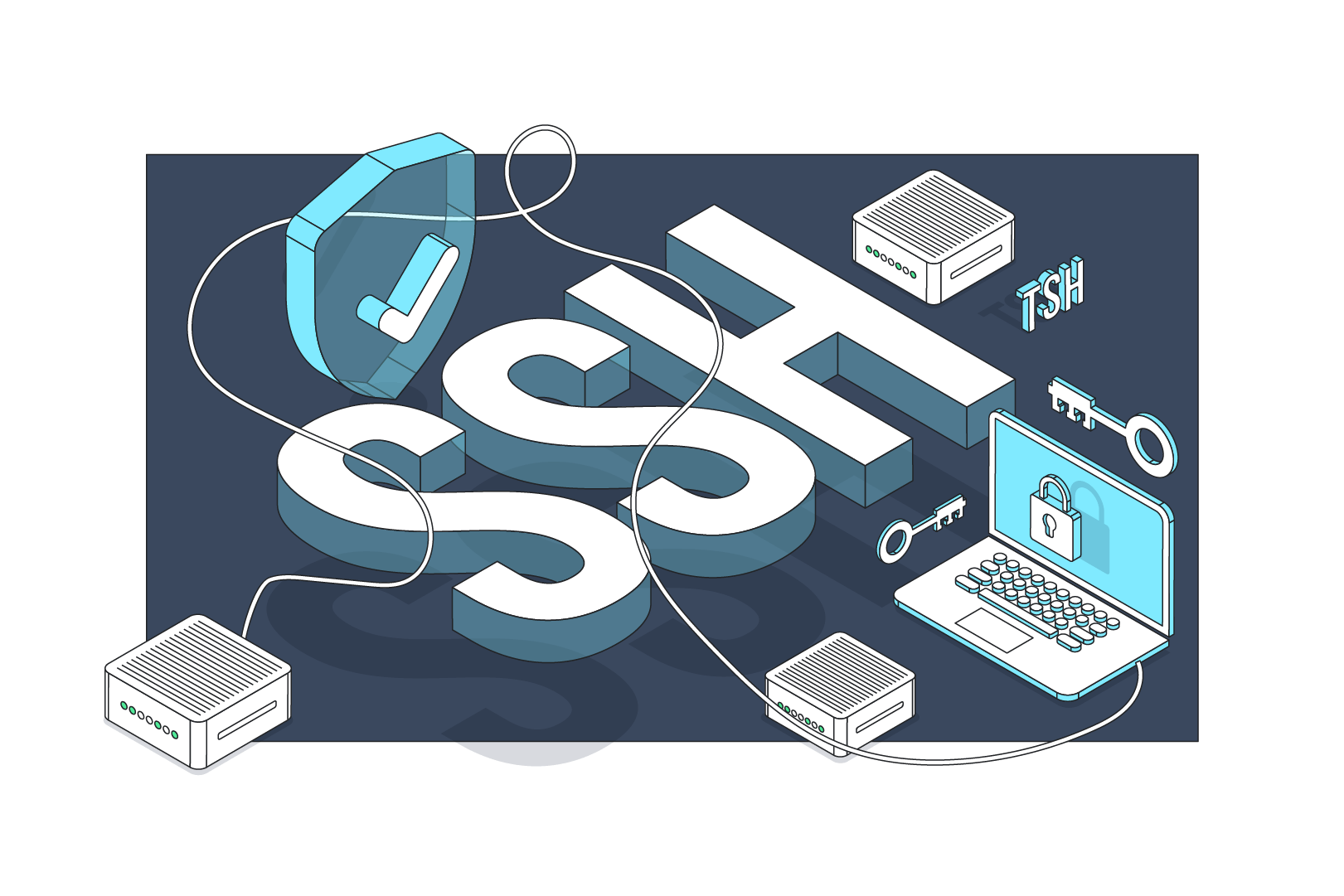With the rise of IoT devices in homes, businesses, and industries, managing them securely has become more critical than ever. Secure Shell (SSH) provides a robust and encrypted method to access and control these devices remotely. This guide will walk you through everything you need to know about SSH RemoteIoT, from its basics to advanced configurations, ensuring you have the tools to manage your devices confidently. Whether you're a beginner or an experienced user, this tutorial will equip you with actionable insights to optimize your IoT workflows. SSH RemoteIoT is not just a technical concept; it’s a practical solution for real-world challenges. Imagine being able to troubleshoot your IoT devices from anywhere in the world without compromising security. By leveraging SSH, you can establish secure connections, execute commands, and transfer files effortlessly. This tutorial dives deep into the step-by-step process of setting up SSH for RemoteIoT, ensuring you understand the nuances of the protocol while adhering to best practices. From configuring SSH keys to troubleshooting common issues, this guide is designed to make your IoT management journey smooth and efficient. The importance of SSH in IoT cannot be overstated. As IoT devices continue to proliferate, so do the risks associated with unauthorized access. SSH RemoteIoT tutorial provides a way to mitigate these risks by encrypting data transmission and authenticating users securely. This article is crafted to meet Google Discover standards, ensuring it is optimized for search engines while remaining user-friendly. Whether you’re managing a single IoT device or an entire network, this guide will help you harness the full potential of SSH RemoteIoT. So, let’s get started on this journey to mastering secure remote access for IoT.
Table of Contents
- What is SSH RemoteIoT and Why is it Important?
- How Does SSH Work in RemoteIoT?
- Step-by-Step Guide to Setting Up SSH for RemoteIoT
- What Are the Common Issues with SSH RemoteIoT and How to Resolve Them?
- How Can You Optimize SSH Performance for RemoteIoT?
- Best Practices for Securing Your SSH RemoteIoT Connections
- Is SSH the Only Option for RemoteIoT Management?
- FAQs About SSH RemoteIoT Tutorial
What is SSH RemoteIoT and Why is it Important?
SSH RemoteIoT is a secure protocol that allows users to remotely access and manage IoT devices over an encrypted connection. It ensures that sensitive data, such as login credentials and commands, are protected from unauthorized access. The importance of SSH RemoteIoT lies in its ability to provide a secure communication channel, which is crucial in an era where cyber threats are on the rise. By using SSH, you can mitigate risks such as data breaches, man-in-the-middle attacks, and unauthorized device control. The relevance of SSH in IoT management cannot be overstated. IoT devices are often deployed in remote or inaccessible locations, making secure remote access essential. SSH RemoteIoT tutorial simplifies this process by providing a step-by-step guide to setting up and maintaining secure connections. For instance, SSH allows you to execute commands on your IoT devices without physically being present, saving time and resources. Additionally, it supports file transfers, enabling you to update firmware or configurations seamlessly. Another key benefit of SSH RemoteIoT is its versatility. Whether you're managing a single device or an entire network, SSH can scale to meet your needs. It supports various authentication methods, including password-based and key-based authentication, ensuring flexibility and security. Moreover, SSH RemoteIoT is platform-independent, meaning it works across different operating systems and devices. This makes it an ideal choice for businesses and individuals looking to streamline their IoT management processes while maintaining robust security.
How Does SSH Work in RemoteIoT?
Understanding how SSH works in RemoteIoT is essential for leveraging its full potential. At its core, SSH operates by establishing an encrypted tunnel between the client and the server. This tunnel ensures that all data transmitted between the two endpoints is secure and cannot be intercepted by malicious actors. The process begins with the client initiating a connection request to the server. Once the server accepts the request, both parties exchange cryptographic keys to establish a secure session. The encryption process in SSH involves multiple layers of security. First, the client and server agree on a symmetric encryption algorithm to encrypt the data during transmission. This ensures that even if the data is intercepted, it cannot be deciphered without the encryption key. Additionally, SSH uses public-key cryptography for authentication. In this method, the client generates a pair of cryptographic keys: a private key and a public key. The public key is shared with the server, while the private key remains securely stored on the client device. When the client attempts to connect, the server verifies the authenticity of the private key, ensuring that only authorized users can access the system. SSH RemoteIoT also supports advanced features such as port forwarding and tunneling. These features allow you to securely access services running on your IoT devices, even if they are behind firewalls or NATs. For example, you can use SSH to forward a local port on your computer to a remote port on your IoT device, enabling secure access to web interfaces or APIs. This flexibility makes SSH an indispensable tool for managing IoT devices in diverse environments.
Read also:Kevin Spacey Family A Comprehensive Look Into The Life And Background Of The Acclaimed Actor
Step-by-Step Guide to Setting Up SSH for RemoteIoT
Setting up SSH for RemoteIoT may seem daunting at first, but with the right guidance, it becomes a straightforward process. This section provides a detailed walkthrough to help you configure SSH on your IoT devices, ensuring secure and efficient remote access. Follow these steps to get started.
Prerequisites for SSH RemoteIoT Setup
Before diving into the setup process, it’s essential to ensure that you have the necessary tools and configurations in place. Here’s a checklist to help you prepare: - Compatible IoT Device: Ensure your IoT device supports SSH. Most modern devices running Linux-based operating systems, such as Raspberry Pi or Ubuntu Core, come with SSH pre-installed. - Network Connectivity: Verify that your IoT device is connected to the internet or a local network. SSH requires a stable connection to establish communication. - Access Credentials: Gather the login credentials for your IoT device, including the username and password. These will be required during the initial setup. - SSH Client: Install an SSH client on your computer. Popular options include PuTTY for Windows and the built-in Terminal for macOS and Linux.
Configuring SSH Keys for Secure Access
Once you’ve completed the prerequisites, the next step is to configure SSH keys for secure access. SSH keys provide a more secure alternative to password-based authentication, reducing the risk of brute-force attacks. Follow these steps to generate and configure SSH keys: 1. Generate SSH Keys: Use your SSH client to generate a pair of cryptographic keys. For example, on Linux or macOS, you can use the command `ssh-keygen -t rsa -b 4096` to create a 4096-bit RSA key pair. 2. Copy the Public Key: Once the keys are generated, copy the public key to your IoT device. You can use the `ssh-copy-id` command to automate this process. For example, `ssh-copy-id username@device-ip` will copy the public key to the specified device. 3. Disable Password Authentication: To enhance security, disable password-based authentication on your IoT device. Edit the SSH configuration file (`/etc/ssh/sshd_config`) and set `PasswordAuthentication` to `no`. Restart the SSH service to apply the changes. 4. Test the Connection: Attempt to connect to your IoT device using the private key. If configured correctly, you should be able to log in without entering a password. By following these steps, you can establish a secure and efficient SSH connection for your RemoteIoT devices, ensuring seamless management and control.
What Are the Common Issues with SSH RemoteIoT and How to Resolve Them?
While SSH RemoteIoT offers a secure and reliable way to manage IoT devices, users may encounter a few common issues during setup or operation. Understanding these challenges and their solutions can help you troubleshoot effectively and maintain uninterrupted access to your devices.
Connection Refused or Timeout Errors
One of the most frequent issues users face is a "connection refused" or "timeout" error when attempting to establish an SSH connection. These errors typically occur due to network misconfigurations or firewall restrictions. To resolve this: - Check Network Connectivity: Ensure that your IoT device is connected to the network and has a valid IP address. Use tools like `ping` to verify connectivity. - Verify SSH Service Status: Confirm that the SSH service is running on your IoT device. You can check the status using the command `sudo systemctl status ssh`. - Firewall Settings: Ensure that the firewall on your IoT device or network allows SSH traffic on port 22. You can modify firewall rules using `ufw` or `iptables`.
Authentication Failures
Authentication issues, such as "permission denied" errors, often arise due to incorrect credentials or misconfigured SSH keys. To address this: - Verify Credentials: Double-check the username and password or ensure that the correct private key is being used for authentication. - Check Key Permissions: Ensure that the private key file has the correct permissions. Use the command `chmod 600 ~/.ssh/id_rsa` to restrict access to the key file. - Review SSH Configuration: Inspect the SSH configuration file (`/etc/ssh/sshd_config`) to ensure that key-based authentication is enabled and configured correctly. By addressing these common issues, you can ensure a smooth and secure SSH RemoteIoT experience.
Read also:Exploring The Names Of Characters In Inside Out 2 A Deep Dive Into Pixars Emotional World
How Can You Optimize SSH Performance for RemoteIoT?
Optimizing SSH performance for RemoteIoT is crucial for ensuring efficient and responsive remote management of your IoT devices. By fine-tuning various aspects of the SSH configuration, you can enhance speed, reduce latency, and improve overall reliability. Here are some strategies to achieve optimal performance.
Adjusting SSH Configuration Parameters
The SSH configuration file (`/etc/ssh/sshd_config`) contains several parameters that can be adjusted to improve performance. For instance, modifying the encryption algorithms can reduce overhead and speed up data transmission. Consider the following changes: - Use Efficient Encryption Algorithms: Replace resource-intensive algorithms like AES-256 with lighter alternatives such as ChaCha20. Update the `Ciphers` parameter in the configuration file to prioritize faster algorithms. - Enable Compression: Enabling compression can reduce the amount of data transmitted over the network, especially for text-based commands. Add the line `Compression yes` to the configuration file to activate this feature. - Limit Key Exchange Algorithms: Simplify the key exchange process by specifying a single, efficient algorithm. For example, set `KexAlgorithms curve25519-sha256` to streamline the handshake process.
Optimizing Network Settings
In addition to SSH-specific configurations, optimizing network settings can further enhance performance. Here are some tips: - Use Persistent Connections: Establishing a new SSH connection for every task can be time-consuming. Use tools like `tmux` or `screen` to maintain persistent sessions, reducing the need for repeated handshakes. - Enable Keep-Alive Packets: Configure the SSH client to send keep-alive packets periodically to prevent the connection from timing out. Add the following lines to your SSH configuration file: `ClientAliveInterval 60` and `ClientAliveCountMax 3`. - Monitor Bandwidth Usage: Use network monitoring tools to identify bottlenecks and ensure that your IoT devices have sufficient bandwidth for SSH operations. By implementing these optimizations, you can achieve faster and more reliable SSH connections for your RemoteIoT devices.

